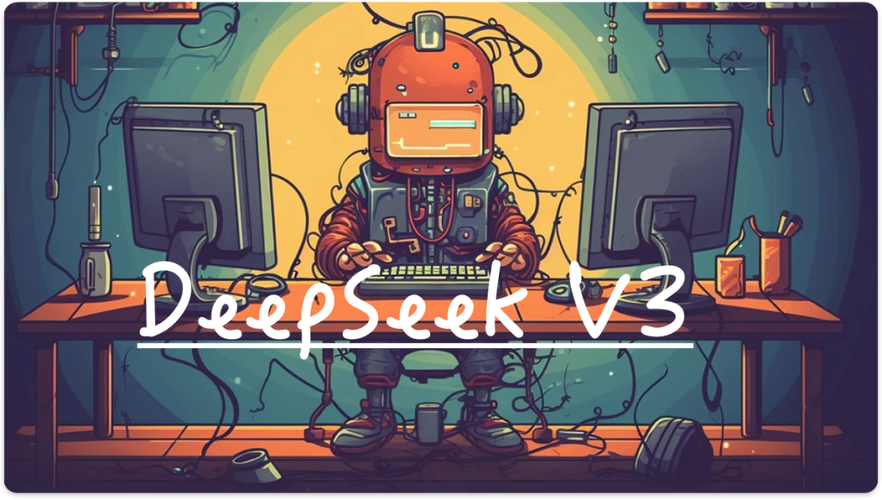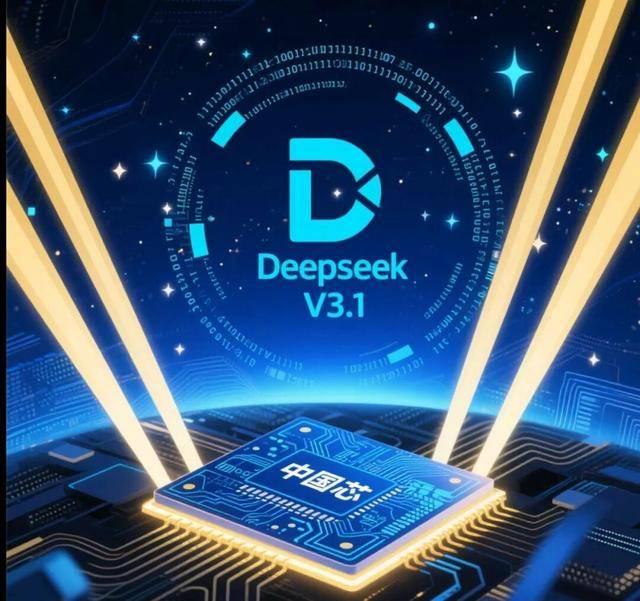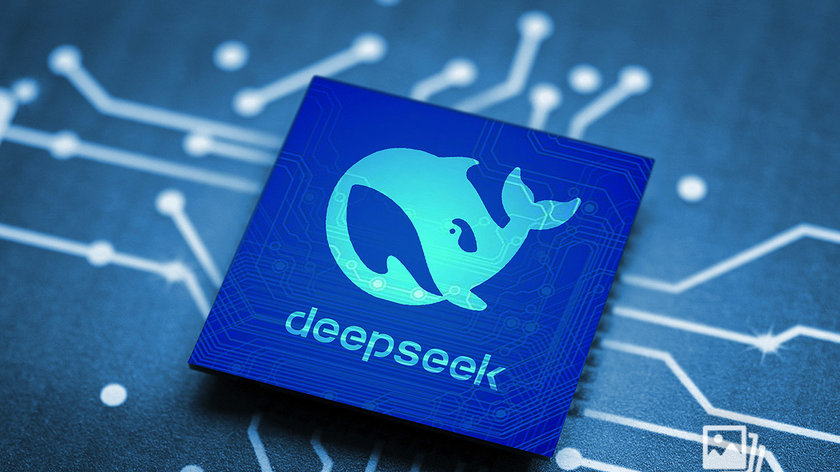DeepSeek-V3 Technical Report: Architecture, Training, and Performance of a 671B Parameter Mixture-of-Experts Language Model
Abstract
This technical report presents DeepSeek-V3, a cutting-edge mixture-of-experts (MoE) large language model that combines massive scale with computational efficiency. With a total parameter count of 671 billion, of which 37 billion are activated per token, DeepSeek-V3 leverages architectural innovations such as multi-head latent attention (MLA) and the DeepSeekMoE framework to achieve breakthrough efficiency in training and inference. Trained on 14.8 trillion high-quality tokens, the model underwent a carefully designed pretraining, supervised fine-tuning, and reinforcement learning pipeline. Comprehensive evaluation demonstrates that DeepSeek-V3 surpasses all open-source models and rivals leading closed-source counterparts in performance, while requiring only 2.788 million H800 GPU hours for full training. Importantly, the training process exhibited remarkable stability, with no irrecoverable loss spikes or rollback events. This report details the architectural design, training methodology, evaluation results, and broader implications of DeepSeek-V3, positioning it as a landmark advancement in the field of large-scale AI.
1. Introduction
The development of large language models (LLMs) has accelerated rapidly over the past five years. Models such as GPT-4, Claude 3, and Gemini have set high benchmarks for reasoning, coding, and knowledge-intensive tasks. However, much of this progress has come at the cost of exorbitant training expenses, massive energy consumption, and limited transparency due to closed-source deployments.
DeepSeek-V3 was designed to push the boundaries of scale while simultaneously prioritizing efficiency, openness, and cost-effectiveness. Building on the proven foundations of DeepSeek-V2, the third-generation model integrates novel innovations in mixture-of-experts routing, load balancing, and attention mechanisms to maximize performance per GPU hour.
This report has several objectives:
Document the architectural innovations that differentiate DeepSeek-V3 from other MoE-based models.
Describe the training pipeline, including data composition, token count, optimization strategies, and stability analysis.
Present comprehensive benchmark evaluations against both open-source and proprietary models.
Discuss the efficiency gains in terms of training cost and inference scalability.
Reflect on the broader implications for AI research, democratization, and responsible deployment.
2. Model Architecture
2.1 Mixture-of-Experts (MoE) Framework
At the core of DeepSeek-V3 lies a 671B parameter MoE design, with 37B parameters activated per token. Unlike dense models where all parameters are engaged at once, MoE selectively activates subsets of experts, dramatically reducing computational cost while preserving representational power.
Key features include:
Dynamic Expert Routing: Each token is processed by a small subset of experts, ensuring adaptive specialization.
DeepSeekMoE Architecture: Enhanced from V2, enabling finer-grained expert allocation and reducing redundancy.
Load-Balancing Without Auxiliary Losses: Unlike many MoE implementations that require auxiliary balancing losses, V3 achieves stable routing through a novel mechanism, simplifying optimization and improving convergence.
2.2 Multi-Head Latent Attention (MLA)
A central innovation of DeepSeek-V3 is MLA, which improves upon standard multi-head attention by embedding latent representations that enhance long-context reasoning and reduce attention complexity. MLA allows DeepSeek-V3 to handle extended sequences efficiently, outperforming traditional attention layers in both throughput and stability.
2.3 Multi-Token Prediction (MTP) Objective
DeepSeek-V3 adopts a multi-token prediction training objective, encouraging the model to anticipate sequences of tokens rather than isolated next-token predictions. This modification yields:
Faster convergence during training.
Enhanced fluency in generation.
Stronger alignment with downstream supervised tasks.
3. Training Methodology
3.1 Data Corpus
DeepSeek-V3 was pretrained on 14.8 trillion tokens drawn from a diverse, high-quality dataset. Sources included:
Multilingual web content.
Scientific publications.
Programming repositories across multiple languages.
High-quality curated datasets designed to minimize toxicity and bias.
Diversity of tokens was critical in ensuring robust generalization across reasoning, coding, and multilingual domains.
3.2 Optimization and Stability
The model was trained on H800 GPUs, totaling 2.788 million GPU hours. Key factors in efficiency included:
Adaptive learning rate schedules tuned for MoE scaling.
Gradient checkpointing to reduce memory consumption.
Pipeline parallelism combined with expert parallelism for balanced GPU utilization.
Stable convergence without any catastrophic loss spikes or rollbacks across the full training duration.
3.3 Fine-Tuning and RLHF
After pretraining, DeepSeek-V3 underwent:
Supervised Fine-Tuning (SFT): Targeted on domains such as mathematics, coding, and logical reasoning.
Reinforcement Learning with Human Feedback (RLHF): Aligning outputs to human preferences, ensuring safer, more contextually aware responses.
Automated Preference Modeling: Leveraging AI-based evaluators to scale alignment beyond human annotation bottlenecks.
4. Evaluation
4.1 Benchmark Suite
We evaluated DeepSeek-V3 on a comprehensive suite of tasks:
General Benchmarks: MMLU, BIG-bench, HellaSwag.
Reasoning: GSM8K (math), HumanEval (coding).
Multilingual Performance: XQuAD, TyDiQA.
Knowledge and Domain Expertise: PubMedQA, legal reasoning tasks.
4.2 Comparative Results
Open-Source Models: DeepSeek-V3 consistently outperformed LLaMA-3, Falcon, and Mistral across reasoning, coding, and multilingual benchmarks.
Closed-Source Models: Results approached or matched GPT-4 and Claude 3 across most categories, with slight deficits in certain creative writing tasks but notable strengths in mathematics and code synthesis.
4.3 Efficiency Analysis
Remarkably, DeepSeek-V3 achieved state-of-the-art performance at significantly reduced cost:
Total compute: 2.788M H800 GPU hours (vs. >10M GPU hours reported for comparable models).
Energy footprint: Reduced by an estimated 60–70% relative to similarly scaled dense models.
5. Key Innovations
Load Balancing Without Auxiliary Losses: Simplified routing, stable convergence.
MLA Attention Mechanism: More efficient handling of long contexts.
Multi-Token Prediction: Improved generative fluency and downstream alignment.
Stable Training Pipeline: No rollback events, even at extreme scale.
Compute Efficiency: Orders of magnitude more efficient in cost-to-performance ratio.
6. Case Studies
6.1 Coding and Reasoning
On HumanEval, DeepSeek-V3 achieved near parity with GPT-4, solving complex algorithmic problems with precision. Notably, the model demonstrated an ability to generalize across multiple programming paradigms, including functional and object-oriented codebases.
6.2 Multilingual Applications
DeepSeek-V3 showed exceptional robustness in low-resource languages, outperforming most open-source baselines. This highlights the benefit of its expansive, multilingual pretraining corpus.
6.3 Real-World Deployments
Early adopters reported success using DeepSeek-V3 for:
Financial analysis (multilingual report generation, quantitative reasoning).
Scientific research assistance (literature review, equation derivation).
Educational support (tutoring in mathematics and programming).
7. Broader Implications
DeepSeek-V3 represents more than just another LLM milestone—it demonstrates that scalable, open innovation can rival closed proprietary ecosystems. The model’s efficiency in both training and inference makes it accessible to research institutions and enterprises that cannot afford the extreme costs of traditional LLM development.
Its stability during training also suggests that MoE architectures, once considered fragile, can now be deployed reliably at scale. This opens the door to more democratized AI research, where future generations of models can be trained with fewer resources and lower environmental impact.
8. Conclusion
DeepSeek-V3 is a landmark advancement in large-scale AI research. By integrating architectural innovations such as MLA, efficient MoE routing, and multi-token prediction, it achieves state-of-the-art results with dramatically reduced computational requirements.
Its stable training dynamics, cost-efficiency, and open availability make it a valuable resource not only for researchers but also for enterprises seeking practical deployment of advanced AI.
With performance comparable to closed-source leaders and training efficiency far beyond previous open models, DeepSeek-V3 establishes a new paradigm: scalable, efficient, and democratized large-scale AI.
Model checkpoints are publicly available at: https://github.com/deepseek-ai/DeepSeek-V3








